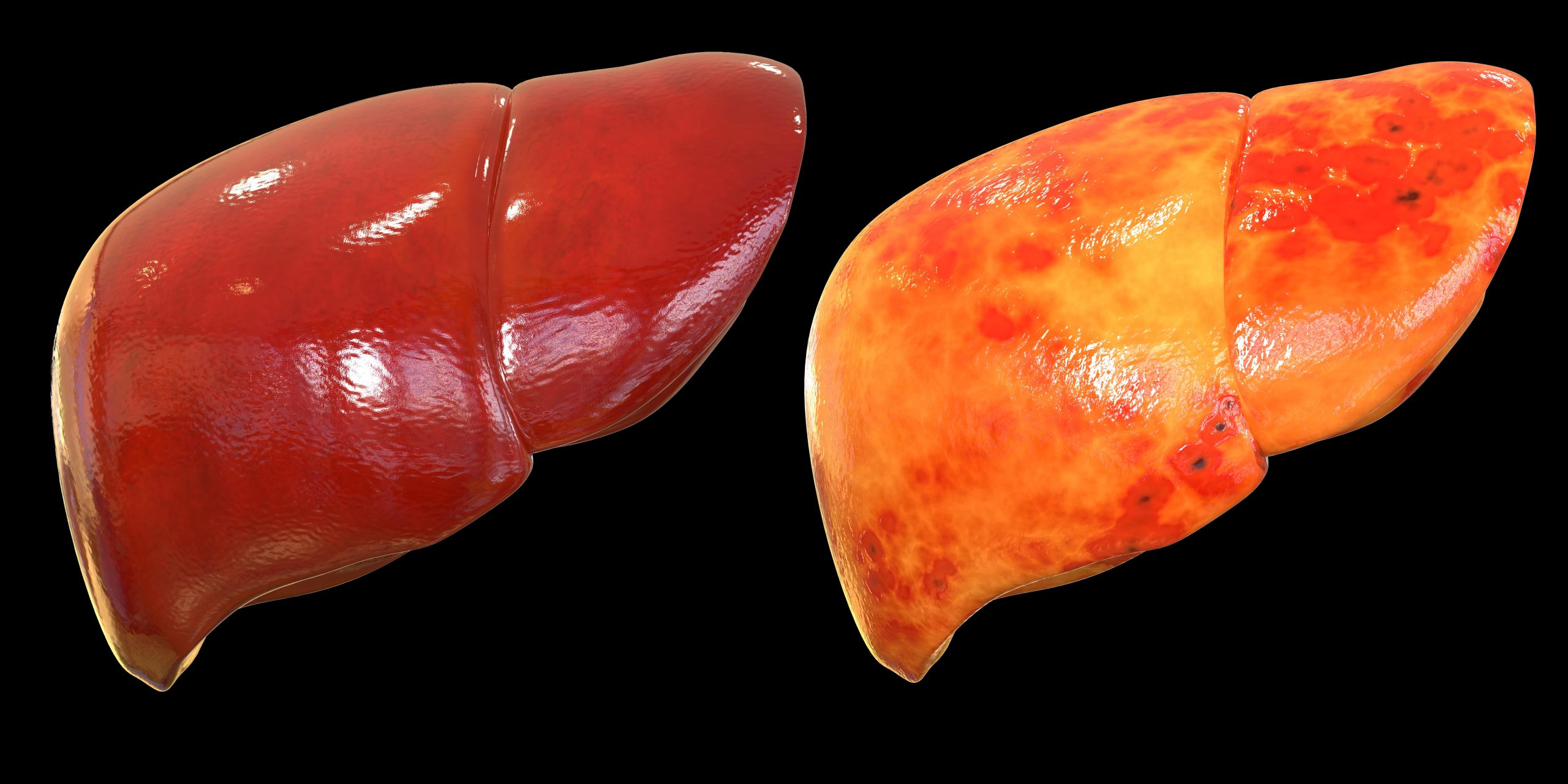Non-Alcoholic Fatty Liver Disease (NAFLD)
What is Non-Alcoholic Fatty Liver Disease (NAFLD)?
NAFLD or Non-Alcoholic Fatty Liver Disease is a condition where there is excess fat in the liver. It can be divided into two types:
Non-Alcoholic Fatty Liver (NAFL) or Non-Alcoholic Steatohepatitis (NASH).
NAFL: Non-Alcoholic Fatty Liver is when there is fat accumulation in the liver, but little to no liver damage or inflammation. NAFL generally does not lead to further complications. However, it causes pain due to the liver enlarging.
NASH: Non-Alcoholic Steatohepatitis is when there is the presence of liver damage and inflammation on top of fat accumulation. The damage and inflammation of the liver can lead to fibrosis or liver scarring. In severe cases, the liver may be permanently damaged and scarred, which leads to cirrhosis.

NAFLD is often a quietly progressive disease. Patients with NAFLD are often diagnosed incidentally when they visit a doctor and undergo a health screening. Often NAFLD is detected on an ultrasound scan of the liver or NAFLD is suspected because of abnormal liver blood tests. NAFLD can have few or no symptoms in the early stages of the disease. Some non-specific symptoms may include right upper abdominal discomfort and fatigue.
However, patients with advanced liver disease or cirrhosis or liver cancer may have symptoms including fatigue, jaundice, confusion, gastrointestinal bleeding, loss of weight, loss of appetite, abdominal bloating and distension and pain in the upper abdominal area.
NAFLD is often diagnosed via screening blood tests or ultrasound. Patients with NAFLD and especially those with NonAlcoholic SteatoHepatitis or NASH should undergo further assessment by their doctor to exclude other causes of liver disease and have a baseline assessment of a potential progressive liver disease and liver fibrosis. NAFLD is also associated with a higher risk of hypertension, hyperlipidaemia, diabetes mellitus, ischaemic heart disease and stroke and all patients with fatty liver should be screened for these.
NAFLD is caused by a combination of lifestyle and genetic factors. Excessive intake of calories with inadequate exercise results in fat accumulation in the body and subsequently in the liver over a period of time. Fructose consumption may result in preferential fat accumulation in the liver. Genetic and epigenetic factors also play an important role in NAFLD development. Sometimes fat accumulation in the liver is caused by other diseases such as hepatitis C and Wilson disease which are not NAFLD by definition. Many medications may also cause fat accumulation in the liver. Many are not aware until it is too late because of the lack of fatty liver symptoms.
NAFLD most commonly affects the middle-aged and the elderly with comorbidities such as obesity, hypertension, type II diabetes and hyperlipidaemia. However, there is an increasing prevalence of NAFLD being diagnosed in children and young adults who are overweight or obese. As obesity rates have risen in Singapore, the prevalence of NAFLD has also increased. NAFLD is also associated with a high carbohydrate diet and high sugar intake.
Patients with NAFLD and insulin resistance or diabetes are at a high risk of liver fibrosis and subsequent liver cirrhosis. Hence, these patients require close monitoring, and if necessary, an adequate fatty liver treatment plan.
The diagnosis of NAFLD and differential diagnosis between simple fatty liver from serious non-alcoholic steatohepatitis requires a liver biopsy. This is often not done because of the risk associated with liver biopsy.
Instead, there is increasing reliance on non-invasive methods to diagnose NAFLD: blood tests to exclude other liver diseases, ultrasound to document steatosis, and non-invasive methods to assess liver stiffness (for example, fibroscan).
It is important to get a proper diagnosis to tailor an effective treatment plan.
Currently, the cornerstone of management for NAFLD is lifestyle modification and weight loss in conjunction with the treatment of associated metabolic risk factors such as type II diabetes, hypertension and hyperlipidaemia.
Patients with advanced liver disease such as liver cirrhosis should be followed up by a specialist to monitor for complications and to carry out liver cancer screening and surveillance. Patients with NAFLD and advanced liver cirrhosis or liver cancer may also be treated by liver transplantation.




